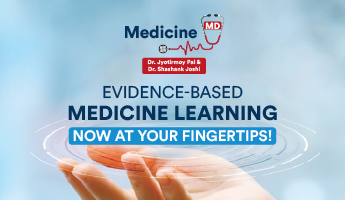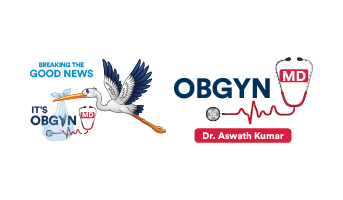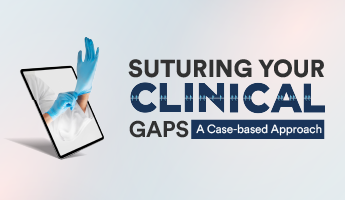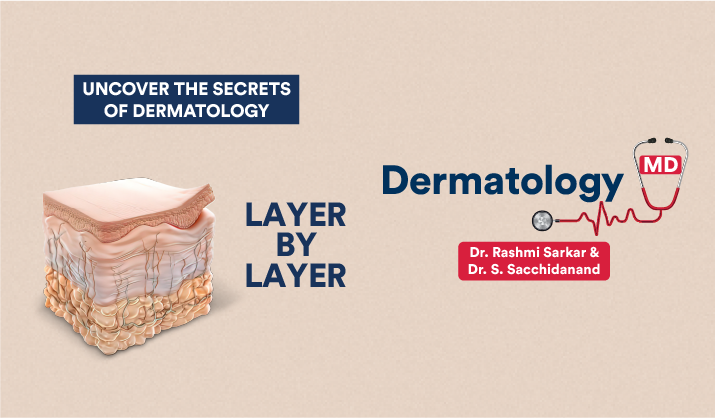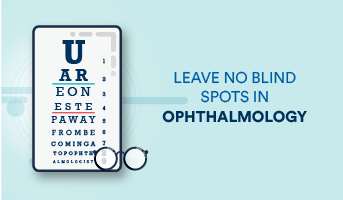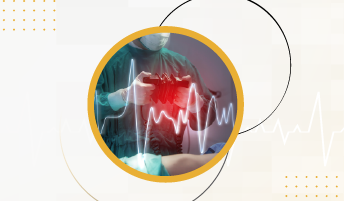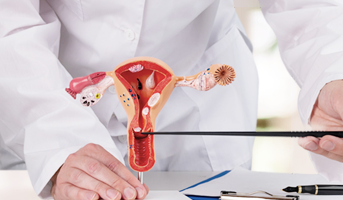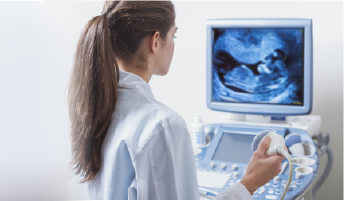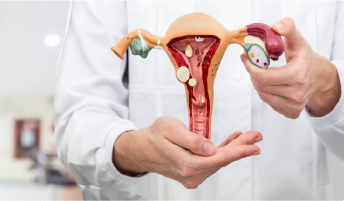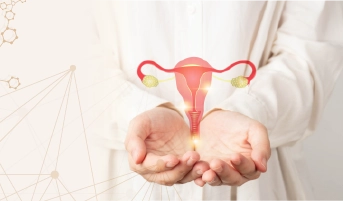Course features


Video Lecture: 210+ Hours
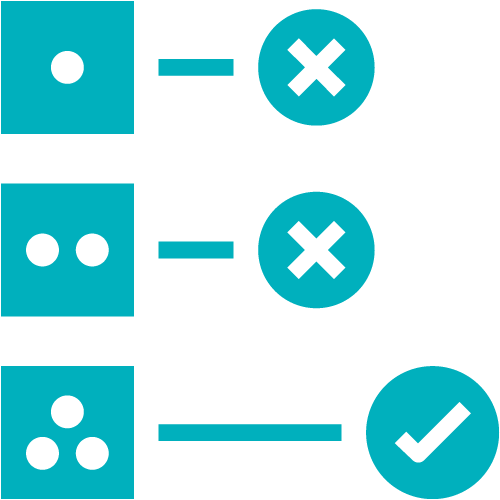

Benchmark Trials: 700+


Self-Assessment Questions: 3550+


Topics in Videos & Notes: 385+


DxTx: 130+


Drug Chart


Dr. Wise AI Chatbot


Printed Notes Available*
About this course
Dr. N. Venkatesh Prajna, the Chief Editor of Ophthalmology MD has crafted the course along with India’s 55 eminent faculty. He has been teaching and training the postgraduates for national & international platforms. He has served the International Council of Ophthalmology for 20 years and is the founding council member of the Asia Cornea Society. He is also famous for his books – “Peyman’s Principals and Practice of Ophthalmology” & “Aravind FAQs in Ophthalmology”.
The Ophthalmology MD course is a well-curated combination of teachings from top-notch ophthalmologists across the country. The course is a compilation of 385+ topics that are important from an academic, clinical, and surgical point of view. All the topics in the course have been thoughtfully selected keeping in mind frequently asked topics and pain areas of the postgraduate students for which they struggle to find sufficient information.
This course is one of the best PG Ophthalmology courses for students who are aiming to fare well in post-graduation. Components of the course rightfully meet the need of students in the pre-operative workup, helping them to perform surgical skills and even manage post-operative complications. It encourages concept-based learning to cater to all the learning needs of the students.
A separate section has been dedicated for exam-going postgraduates with an innovative examination corner section. There is a special emphasis on the correct format of the case and history taking and eliciting the correct clinical findings for commonly presented ophthalmic complaints.
It would also be beneficial for practitioners to gain clinical/surgical ophthalmic skills with the help of surgical videos incorporated along with 3D animated sequences of all surgical steps. The in-video demonstration of the various surgeries being performed will give a whole new dimension to the understanding of the concepts.
The lectures are richly illustrated with clinical/surgical and radiological images along with flowcharts, tables, and boxes, wherever necessary to aid students in developing a thorough overview of each topic, which will also fulfill their examination needs.
Recent evidence-based recommendations have been included for various conditions to acquaint the viewers with recent advancements in the field. The important diagnostic procedures and techniques have been covered in detail along with a drug chart for quick reference by the students with a special focus on drug dosages, adverse effects, and their indications/contraindications.
The Course Includes:
- Video Lectures: 210+ hours of video lecture supported by benchmark/evidence-based studies.
- Lecture Notes: 385+ well-illustrated lecture notes which will act as a ready reckoner for students.
- Examination corner section: Special section incorporated for exam-going students in the form of OSCE/FAQs/Q&A along with tips and tricks.
- Self-Assessment Questions: 3550+ MCQs have been included for self-assessment.
- DxTx: A unique tool comprising 130+ topics for quick consultation. This unique feature allows you to explore critical information in a click. You can learn about the various diseases with pathophysiology, clinical features, diagnosis, treatment, recent advances in a structured format.
- Interactive Drug Formulary: Detailed drug formulary for commonly used drugs in ophthalmology.
- Engagement Activities: Regular Chat Shows, Journal Club, and recent updates included with a panel of eminent faculty.
- Dr. Wise (AI Chatbot): The chatbot clarifies theoretical as well as practical concepts with the help of AI. It is a comprehensive and interactive solution provider integrated with authentic published resources like books, journals, notes, and videos to offer apt explanations of concepts, treatment modes and more.
- Printed Notes: Concise notes are designed to save time by providing exam-focused, crisp details along with visual learning at an affordable price. The notes also comprise previous years' questions and ensure comprehensive coverage in minimum time. Existing users can purchase the printed notes @6,495 from here.
3 Days Money Back Guarantee available T&Cs apply.
Dr. N. Venkatesh Prajna, the Chief Editor of Ophthalmology MD has crafted the course along with India’s 55 eminent faculty. He has been teaching and training the postgraduates for national & international platforms. He has served the International Council of Ophthalmology for 20 years and is the founding council member of the Asia Cornea Society. He is also famous for his books – “Peyman’s Principals and Practice of Ophthalmology” & “Aravind FAQs in Ophthalmology”.
The Ophthalmology MD course is a well-curated combination of teachings from top-notch ophthalmologists across the country. The course is a compilation of 385+ topics that are important from an academic, clinical, and surgical point of view. All the topics in the course have been thoughtfully selected keeping in mind frequently asked topics and pain areas of the postgraduate students for which they struggle to find sufficient information.
This course is one of the best PG Ophthalmology courses for students who are aiming to fare well in post-graduation. Components of the course rightfully meet the need of students in the pre-operative workup, helping them to perform surgical skills and even manage post-operative complications. It encourages concept-based learning to cater to all the learning needs of the students.
A separate section has been dedicated for exam-going postgraduates with an innovative examination corner section. There is a special emphasis on the correct format of the case and history taking and eliciting the correct clinical findings for commonly presented ophthalmic complaints.
It would also be beneficial for practitioners to gain clinical/surgical ophthalmic skills with the help of surgical videos incorporated along with 3D animated sequences of all surgical steps. The in-video demonstration of the various surgeries being performed will give a whole new dimension to the understanding of the concepts.
The lectures are richly illustrated with clinical/surgical and radiological images along with flowcharts, tables, and boxes, wherever necessary to aid students in developing a thorough overview of each topic, which will also fulfill their examination needs.
Recent evidence-based recommendations have been included for various conditions to acquaint the viewers with recent advancements in the field. The important diagnostic procedures and techniques have been covered in detail along with a drug chart for quick reference by the students with a special focus on drug dosages, adverse effects, and their indications/contraindications.
The Course Includes:
- Video Lectures: 210+ hours of video lecture supported by benchmark/evidence-based studies.
- Lecture Notes: 385+ well-illustrated lecture notes which will act as a ready reckoner for students.
- Examination corner section: Special section incorporated for exam-going students in the form of OSCE/FAQs/Q&A along with tips and tricks.
- Self-Assessment Questions: 3550+ MCQs have been included for self-assessment.
- DxTx: A unique tool comprising 130+ topics for quick consultation. This unique feature allows you to explore critical information in a click. You can learn about the various diseases with pathophysiology, clinical features, diagnosis, treatment, recent advances in a structured format.
- Interactive Drug Formulary: Detailed drug formulary for commonly used drugs in ophthalmology.
- Engagement Activities: Regular Chat Shows, Journal Club, and recent updates included with a panel of eminent faculty.
- Dr. Wise (AI Chatbot): The chatbot clarifies theoretical as well as practical concepts with the help of AI. It is a comprehensive and interactive solution provider integrated with authentic published resources like books, journals, notes, and videos to offer apt explanations of concepts, treatment modes and more.
- Printed Notes: Concise notes are designed to save time by providing exam-focused, crisp details along with visual learning at an affordable price. The notes also comprise previous years' questions and ensure comprehensive coverage in minimum time. Existing users can purchase the printed notes @6,495 from here.
3 Days Money Back Guarantee available T&Cs apply.
See Less...Content
Orientation
Lens: Anatomy, Physiology and Biochemistry
Lens: Pathogenesis and Pathology
Anesthesia for Cataract Surgery
Preoperative Evaluation of Cataract Surgery
IOL Power Calculation: Biometry
IOL Power Calculation: Formulae
IOL Power Calculation: Special Situations
Ocular Viscosurgical Devices
Manual Extracapsular Cataract Extraction
MSICS: Instrumentation
MSICS: Bridle Suture and Conjunctival Flap
MSICS: Sclero Corneal Tunnel construction
MSICS: Capsulotomy and capsulorhexis
MSICS: Hydro procedures
MSICS: Nuclear prolapse
MSICS: Nucleus extraction
MSICS: Cortex aspiration
MSICS: PCIOL implantation
MSICS: Wound Closure
MSICS: Intra Operative Complications
MSICS: Post Operative Complications
Astigmatism and MSICS
MSICS in Hypermature Cataract
MSICS in High Myopia
MSICS in Small Pupil
MSICS in Traumatic cataract
MSICS in Uveitic cataract
MSICS in Subluxated Cataract
MSICS in Glaucoma Patients
MSICS in Vitrectomised eyes
Converting SICS to Manual ECCE
Iris Sutured IOL
Iris Claw IOL
Scleral Fixated IOL
Phacodynamics
Phacoemulsification Techniques: Divide and Conquer
Phacoemulsification Techniques: Phacochop
Cortical wash – Coaxial and Bimanual Irrigation Aspiration Techniques
Cortical wash - Coaxial and Bimanual Irrigation Aspiration Techniques
Foldable IOLs, Loading and Implantation
Complications of Phacoemulsification: Intraoperative Complications
Complications of Phacoemulsification: Postoperative Complications
Managing Astigmatism during Phacoemulsification
Phacoemulsification in Small Pupil
Phacoemulsification in Pseudoexfoliation
Phacoemulsification in Dense Brunescent Cataract
Phacoemulsification in Intumescent Cataract
Phacoemulsification - Posterior Polar Cataract
Phacoemulsification - In Extreme Axial Length
Phacoemulsification in Uveitic Cataract
Phacoemulsification in Subluxated Cataract
Phacoemulsification in Combined with Vitreoretinal Surgeries
Phacoemulsification in Aniridic Eye and other Iris Defects
Repositioning of IOL and IOL Exchange
Femto Laser Assisted Cataract Surgery: General Principles
Femto Laser Assisted Cataract Surgery: Regular Cases
Femto Laser Assisted Cataract Surgery: Complicated Cases
Lens Induced Glaucoma
Instrument Sterilization
Cornea: Embryology and Anatomy
Cornea: Physiology and Biochemistry
Sclera
Conjunctiva
Tear Film
Corneal Topography: Basic Principles and Orbscan Imaging
Corneal Topography: Scheimpflug Imaging - Pentacam
Corneal Topography: Imaging Clinical Conditions
Specular Microscopy
Confocal Microscopy
Bacterial Keratitis
Fungal Keratitis
Acanthamoeba Keratitis
Microsporidial Keratitis
Herpes Simplex Keratitis: Clinical Features
Herpes Simplex Keratitis: Management
Herpes Zoster Keratitis
Non Healing Corneal Ulcers
Peripheral Ulcerative Keratitis: General Concepts
Peripheral Ulcerative Keratitis: Mooren's Ulcer
Peripheral Ulcerative Keratitis: Management
Corneal Ectactic Disorders: Keratoconus- Clinical Features
Corneal Ectactic Disorders: PMD, Keratoglobus and Terriens
Corneal Ectactic Disorders: Non-surgical Management
Corneal Ectactic Disorders: Surgical Management
Pterygium: Clinical Features
Pterygium: Management; CAG and AMT
Pterygium: Adjuvants and other Surgeries
Limbal Stem Cell Deficiency: Clinical Features
Limbal Stem Cell Deficiency: Management
Cicatricial Conjunctival Disorders - I
Ocular cicatricial pemphigoid OCP - An overview of current understanding - II
Chemical Injuries of the Eye
Limbal Epithelial Transplantation (SLET and CLET, Buccal)
Amniotic Membrane Transplantation
Keratoprosthesis
Management of Ocular Trauma
Contact Lens
Corneal retrieval and Eye banking
Penetrating keratoplasty
Therapeutic keratoplasty
Graft Rejection: Pathogenesis and Clinical Features
Graft Rejection: Treatment
Refractive Surgery: Concepts and Classification
Refractive Surgery: Concepts of Laser Refractive Surgery
Refractive Surgery: Procedures of Laser Refractive Surgery
Refractive Surgery: Surgical Options for Lasik Rejects
Deep Anterior Lamellar Keratoplasty
Descemet Stripping Automated Endothelial Keratoplasty (DSAEK)
The Angle of Anterior Chamber: Anatomy and Embryology
The Angle of Anterior Chamber: Physiology, Biochemistry and Pharmacology
Aqueous Humour Dynamics
Tonometry
Central Corneal Thickness and Glaucoma
Gonioscopy Tips and Tricks
Pathogenesis of Glaucomatous Optic Neuropathy
Clinical Evaluation of the Optic Nerve Head
Optic Nerve Head Changes in Glaucoma
Interpreting Humphrey Visual Field Reports
Interpreting Octopus Perimetry Reports
Anterior Segment Imaging – UBM and ASOCT
Anterior Segment Imaging UBM and ASOCT
Optic Nerve Head in Glaucoma
Classification of Glaucoma
Ocular Hypertension
Primary Open Angle Glaucoma
Normal-Tension Glaucoma (Low Tension Glaucoma)
PACD: Classification, Mechanism and Risk Factors
PACD: Symptoms, Clinical Evaluation and Management
PACD: Differential Diagnosis and Management of APAC
Pseudoexfoliation Glaucoma: Epidemiology and Etiopathogenesis
Pseudoexfoliation Glaucoma: Clinical features, Diagnosis and Management
Pigmentary Glaucoma: Epidemiology and Etiopathogenesis
Pigmentary Glaucoma: Clinical phases, Diagnosis and Management
Lens Induced Glaucoma
Uveitic Glaucoma
Neovascular Glaucoma: Etiopathogenesis and Clinical Features
Neovascular Glaucoma: Evaluation and Management
Glaucoma Associated with Ocular Trauma
Nanophthalmos and Other Secondary Angle Closure Glaucoma
Glaucoma after Vitreoretinal Procedures/Surgery
Glaucoma after Vitreoretinal Procedures/ Surgery
Steroid Induced Glaucoma
Glaucoma following Penetrating Keratoplasty
Glaucoma Associated with Corneal Disorders
Classification of Pediatric Glaucoma
Primary Congenital Glaucoma: Clinical Features and Differential Diagnosis
Primary Congenital Glaucoma: Management
Juvenile Open Angle Glaucoma
Glaucoma in Phacomatoses
Target Intra Ocular Pressure
Medical Management of Glaucoma: Aim and Principles of Prescribing Medications
Medical Management of Glaucoma: Detailed Pharmacology
Newer Ocular Hypotensive Medications
Neuroprotection
Introduction, Laser procedures in Glaucoma
Laser Peripheral Iridotomy
Lasers other than YAG PI
Trabeculectomy: Basics, Surgical Steps and Adjuvants
Trabeculectomy: Complications and Management
Glaucoma Drainage Devices
Non-penetrating Deep Sclerectomy
Minimally Invasive Glaucoma Surgery- MIGS
Cyclodestructive Procedures
Pearls in Neuro-ophthalmology
Neuro-ophthalmic Cases: Case Scenarios
Approach to Neuroimaging in Neuro-ophthalmology
Approach to a Case of Double Vision
Optic Neuritis
Optic Atrophy
Papilledema
Double Vision A 10-step Assessment Plan
Neuro-Ophthalmic Examination: An Overview
Evaluation of a Pale Optic Disc
Optic Neuropathy
Pupil Pathways and Inference
Bilateral Ocular Motility Disorders - A Differential Diagnosis
An Approach to Swollen Optic Discs
Visual Fields in Neuro-ophthalmology
Nystagmus Evaluation
Basic Microbiology: Classification and Types
Basic Microbiology: Sampling & Microscopy and Ocular Parasites
Antibiotics: Therapy and Testing
Antibiotics Therapy and Testing
Molecular Diagnosis in Ocular Microbiology
Molecular Diagnosis in Ocular Micobiology
Clinical Anatomy of the Orbit
Lacrimal Apparatus
Thyroid Orbitopathy
Imaging of the Orbit: Computed Tomography Scan
Orbital Decompression for Thyroid Orbitopathy
Proptosis
Orbital Trauma- Considerations and principles
Orbital fractures and management
Orbital Infections
Fungal Infections
Parasitic Infections
Orbital Inflammations
Anophthalmic Socket
Contracted Socket
Benign tumors of Orbit
Vascular Lesions of Orbit
Blepharoptosis: Evaluation and Management
Eyelid Retraction
Ectropion
Entropion
Esthetic Eyelid Surgery
Basics of Eyelid Reconstruction
Overview of Eyelid Reconstruction
Lacrimal Drainage System: Anatomy and Anomalies
Evaluation of the Lacrimal System
Congenital Nasolacrimal Duct Obstruction
Adult NasoLacrimal Duct Obstruction
Botulinum Toxin in Ophthalmology
Orbitotomy- Introduction
Lateral Orbitotomy
Orbitotomy - Other Approaches
Oncology: Tumors of the Eyelid
Oncology: Logical Approach to Orbital Tumors
Oncology: Tumors of the Ocular Surface
Oncology: Intraocular Tumors go by the Colors
Development of Visual System
Typical Development of Visual Milestones
Estimation of Visual Acuity in Children
Estimation of Visual Acuity in Infants
Childhood Refractive Errors and Guidelines on Management
Lazy Eye
Red Eye in a Child and Vitamin A Deficiency
Syndromes with Ocular Manifestations
Low Vision (Visual Impairment)
Vision Assessment in Children with Low Vision
Low Vision Aids: Optical
Non Optical Aids And Rehabilitation
Headache in children
Ocular Causes of Headache
Macular Function Tests: Psychophysical Tests
Macular Function Tests: Electrophysiological Tests
Fundus Fluorescein Angiography: Basics
Fundus Fluorescein Angiography: Clinical Conditions
Indocyanine Green Angiography
Optical Coherence Tomography (OCT) in Retina Practice
OCT Angiography in Retina Practice
Ultrasound and UBM
Fundus Autofluorescence and Multicolor Imaging
Retina: Anatomy
Retina: Physiology and Biochemistry
Vitreous
Evaluation of Retina and Vitreous
Diabetic Retinopathy: Epidemiology, Pathogenesis and Clinical features
Diabetic Retinopathy: Investigations and Treatment
Hypertension and the Eye
Central Retinal Vein Occlusion
Branch Retinal Vein Occlusion
ARMD: Epidemiology, Classification & Dry
ARMD: Neovascular- Diagnosis & Imaging
ARMD: Neovascular- Management
Pachychoroid Spectrum Disease Introduction and Pachychoroid Pigment Epitheliopathy
Central Serous Chorioretinopathy
Pachychoroid Neovasculopathy & Polypoidal Choroidal Vasculopathy (PCV)
Peripapillary Pachychoroid Syndrome & Focal Choroidal Excavation
Hereditary Macular Dystrophies
Macular Pathologies
Peripheral Retinal Degenerations
Retinopathy of Prematurity: Etiopathogenesis, Risk factors & Screening
Retinopathy of Prematurity: 2021 Revised Classification
Retinopathy of Prematurity: Management
Melanoma PG 1
Retinoblastoma
Paraneoplastic Retinopathy
Vascular Tumors of Retina and Choroid
Lasers in Retina
Intravitreal Injections: Techniques and Complications
Intravitreal Injections: Indications & Current protocols for Retinal Diseases
Rhegmatogenous Retinal Detachment
Non Rhegmatogenous Retinal Detachment
Posterior Segment Trauma: Closed Globe Injury
Posterior Segment Trauma: Open Globe Injury
Hematological Conditions
Endocrine/Metabolic Conditions
Inflammatory/Autoimmune Conditions
Infective Conditions
Congenital Conditions
Miscellaneous Conditions
Principles of Vitreoretinal Surgery
Intraocular Foreign Body
Post Operative Endophthalmitis – 10 Things you Should Know
Post Operative Endophthalmitis - 10 Things you Should Know
AI in Ophthalmology
Extra Ocular Muscles and Orbital Fascia: Applied Anatomy
Physiology of Extra Ocular Muscles
Binocular Single Vision
Strabismus – Classification and Etiology
Strabismus - Classification and Etiology
Approach to a Comitant Deviation Patient
Diplopia Chart
Hess Chart
Infantile Esotropia
Accommodative Esotropia
Special Forms of Non-Accommodative Esotropia
Intermittent Exotropia (IXT) - Evaluation
Intermittent Exotropia (IXT) - Management
Special Forms of Comitant Exotropia
Approach to Vertical Deviations
Dissociated Vertical Deviation (DVD)
Pattern Strabismus
Paretic Strabismus: General Characteristics
Paretic Strabismus: Evaluation
Diagnosis and Management of 3rd Nerve Palsy Oculomotor Palsy - I
Diagnosis and Management of Trochlear Nerve Superior Oblique Palsy - 4th Nerve
Diagnosis and Management of Abducens Nerve Palsy
Duane Retraction Syndrome: A simplified Perspective-2021
Restrictive Strabismus
Brown's Syndrome
Monocular Elevation Deficiency (MED)
Thyroid related Strabismus
Congenital Fibrosis of Extra Ocular Muscles
Optical and Pharmacological
Orthoptic Exercises
Accommodative Anomalies
Surgical Anatomy and Basic Guidelines on Strabismus Surgery
Instrumentation, Anesthesia, Pre and Post - Operative Anesthetic Care
Recession and Resection on a Horizontal Muscle - Step by Step
Surgeries on Oblique Muscles
Complications of Strabismus Surgery
Uvea Tract: Embryology and Anatomy
Uvea Tract: Pathology and Blood supply
Standardization of uveitis nomenclature
Systematic Work Up - Uveitis
Construction of Differential Diagnosis in Uveitis
Art of Ordering Lab Investigations in Uveitis
Immunosuppressives and New Biologicals
Ocular Tuberculosis
Viral Anterior Uveitis: Clinical features and Causes
Viral Anterior Uveitis: Differential Diagnosis and Treatment
Viral Uveitis: Acute Retinal Necrosis (ARN)
Viral Uveitis: Progressive Outer Retinal Necrosis
Viral Uveitis: Newer Viral Uveitis
Cytomegalovirus (CMV) Posterior Uveitis
Leptospirosis and Syphilitic uveitis
Ocular Toxoplasma: Clinical Presentations
Ocular Toxoplasma: Diagnosis and Treatment
Basic Immunology
Mechanism of Autoimmunity and Autoimmune v/s Autoinflammatory Diseases
Immune Privilege & the Eye and Mechanism of Autoimmune Uveitis
Sarcoidosis: Epidemiology, Pathogenesis, Clinical features and Differential Diagnosis
Sarcoidosis: Diagnosis, Investigations and Treatment
Vogt Koyanagi Harada's Disease: Clinical Features
Vogt Koyanagi Harada's Disease: Investigations and Differential Diagnosis
Vogt Koyanagi Harada's Disease: Treatment
Sympathetic Ophthalmia
The Masquerades
Visual Acuity
Refractive Errors
Retinoscopy
Subjective Refraction
Accommodation and Convergence
Presbyopia Mechanism, Optical Correction and Surgical Procedures
Spectacle Lenses, Frames and Vertex Distance
Bifocals/Trifocals
Progressive Additional Lenses
Prisms
Contact Lenses: Optics, Types and Fitting
Contact Lenses: Fitting of Soft and Rigid contact lenses
Contact Lenses: Complications
Contact Lenses: Special Situations
Color Vision, Contrast Sensitivity and Higher Order Aberrations
Aberrometer
Keratometry
Lensometer
Low Vision Aids
Ocular Embryology
How to Write a Theory Paper
How to Describe Clinical Finding in a Uveitis Case
FAQs in a Uveitis Case
How to Describe Clinical Finding in a Cornea Case
How to Describe Clinical Finding in a Retina Case?
FAQs in a Fundus Case Pertaining to the Retinal Vessels
How to Describe Clinical Finding in a Glaucoma Case
How to Describe Clinical Finding in a Orbit Case
FAQs in a Orbit Case
How to Describe Management in Examinations
Interpretation of Investigations: HFA
Interpretation of Investigations: OCT- RNFL
Interpretation of Investigations: Macular OCT
Interpretation of Investigations: ASOCT & UBM
Interpretation of Investigations: FFA
Interpretation of Investigations: B Scan
Ophthalmic Instruments: Cataract and Cornea
Ophthalmic Instruments: Glaucoma, Squint, Retina and Orbit
Drug Chart
Endocrine Reflections from the Eye
Cases Scenarios in Neuro-ophthalmology
Uvea Tales
Neuro-imaging in Raised Intracranial Pressure
Types of Variables and Univariate Descriptive Statistics
Bivariate Descriptive Statistics
Chief Editors
We aim to bring you the best of content from the eminent faculties.
Money Back Guarantee
You are not entitled to cancel the subscription at any stage. However, we may run specific campaigns having money back guarantee from time to time. Users who have already bought/taken trial/ redeemed the same product before the start of the campaign, will not be eligible for money back under such campaigns.
- The Ophthalmology MD money back guarantee begins from 4th March 2023.
- The offer is applicable on Ophthalmology MD course only.
- The campaign offers a 3 days money back scheme that can only be leveraged by the new users. Here “new users” are addressed to only those users who have purchased the course under the prevailing offer. 3 days money back benefit cannot be availed by users who have either purchased, redeemed, or taken a trial of the same course before making the purchase.
- Refund for No Cost EMI transactions will be processed post deduction of EMI Fee.
- The refund will only be initiated after receiving the request within 3 days from date of purchase over email marketing@diginerve.com. Refund will be initiated to the original payment source within 5 working days.
- We reserve the right to decide the eligibility of all claims made under money back scheme and approve/disapprove all such claims based on terms and conditions. Our decision will be final and binding in all cases.
- Money back is not applicable on No Cost EMI.

